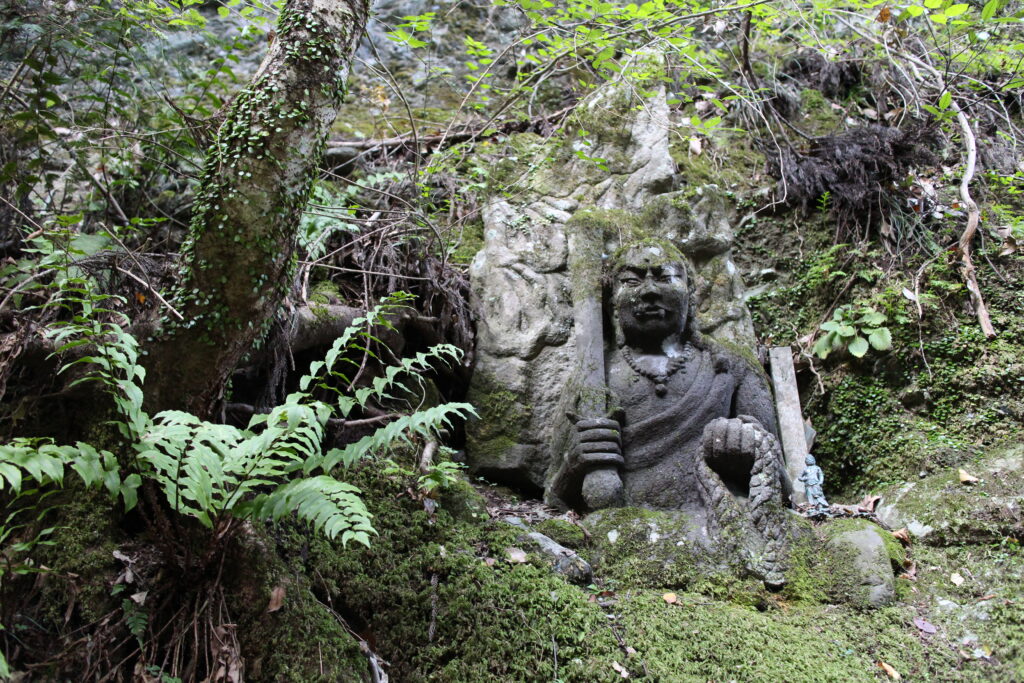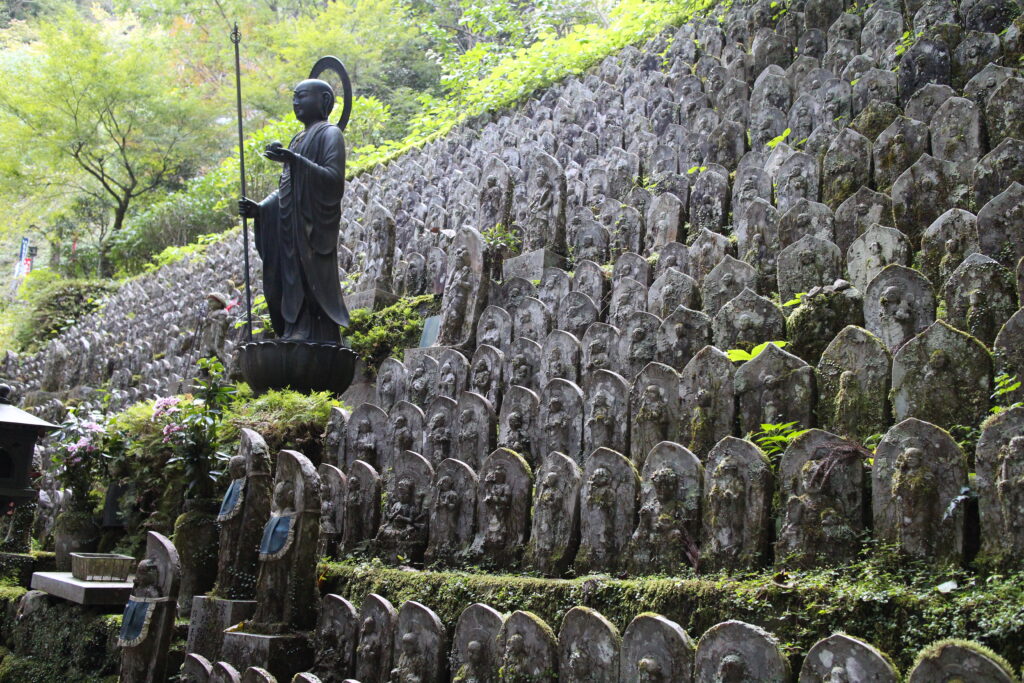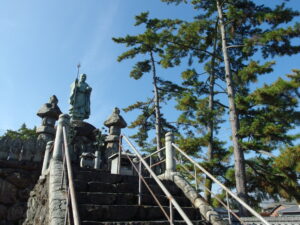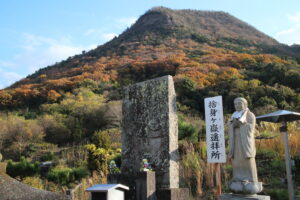The Shikoku Pilgrimage, or Henro is one of Japan’s many sacred pilgrimage routes. It is about 1,200 km long, and forms a circle around the island of Shikoku. While its legendary origins center on the monk Kukai, who lived in the 9th century, its roots stretch back even further.
Shikoku: A Land Apart

Though close to the ancient capitals of Nara and Kyoto, Shikoku was separated by treacherous seas and covered in dense mountains. It was favored by zealous Buddhist practitioners as a place to escape the noise and strict control of cities. The monks who came to Shikoku sought out isolated places suited to meditation, and it’s likely that a network of such places spread by word of mouth from practitioner to practitioner. Kukai, who was born in the north of Shikoku in 774, mentions practicing at three such places: Mt. Tairyu, the current site of Temple 21; a cave in Muroto on the island’s southern coast; and Mt. Ishizuchi, western Japan’s tallest mountain, in modern-day Ehime. After Kukai’s death, monks of his Shingon sect and others continued to travel to Shikoku, spreading faith in Kukai—posthumously called Kobo Daishi—as they went. This in turn attracted more laypeople to “follow in Kukai’s footsteps” in Shikoku. The popularity of the pilgrimage grew steadily over the next few centuries.
The Henro Boom

By the 17th century, the pilgrimage had been formalized as 88 Sacred Sites and had become synonymous with faith in Kobo Daishi Kukai. It’s around this time that it came to be called the “Henro,” or “Encompassing Path,” indicating a shift from the freeform, nature-based practice of Kukai’s day to a more defined route between set sites. This period also saw the publication of the first pilgrim guidebook, written in 1678 by a monk named Shinnen, which standardized the order of the sacred sites, the prayers at each of them, and parts of the route. This was in some ways the heyday of the Henro, with pilgrims from every level of society braving the treacherous journey in search of answered prayers and spiritual fulfillment. Read more about the Henro and Japan’s other sacred routes on the JNTO Website.
The Modern Henro
The Henro continued to evolve as Japan transitioned from a feudal society to an industrial one in the 19th and 20th centuries. The biggest change, without a doubt, was the advent of the automobile. Nowadays, most pilgrims undertake the journey either on organized bus tours or by private car. Even so, the number of walking pilgrims—particularly from outside Japan—increases year after year, adding yet another chapter to the long history of the Shikoku Henro. Read one pilgrim’s reflections on visiting some temples around Shikoku at Japan Guide.
Start Your Journey
The Henro’s multilayered past means it offers something for everyone. Our offerings feature a variety of guided activities on the Henro, from weeklong fully immersive walking pilgrimages to meditation experiences in temples. Contact us now to start planning your pilgrimage.




